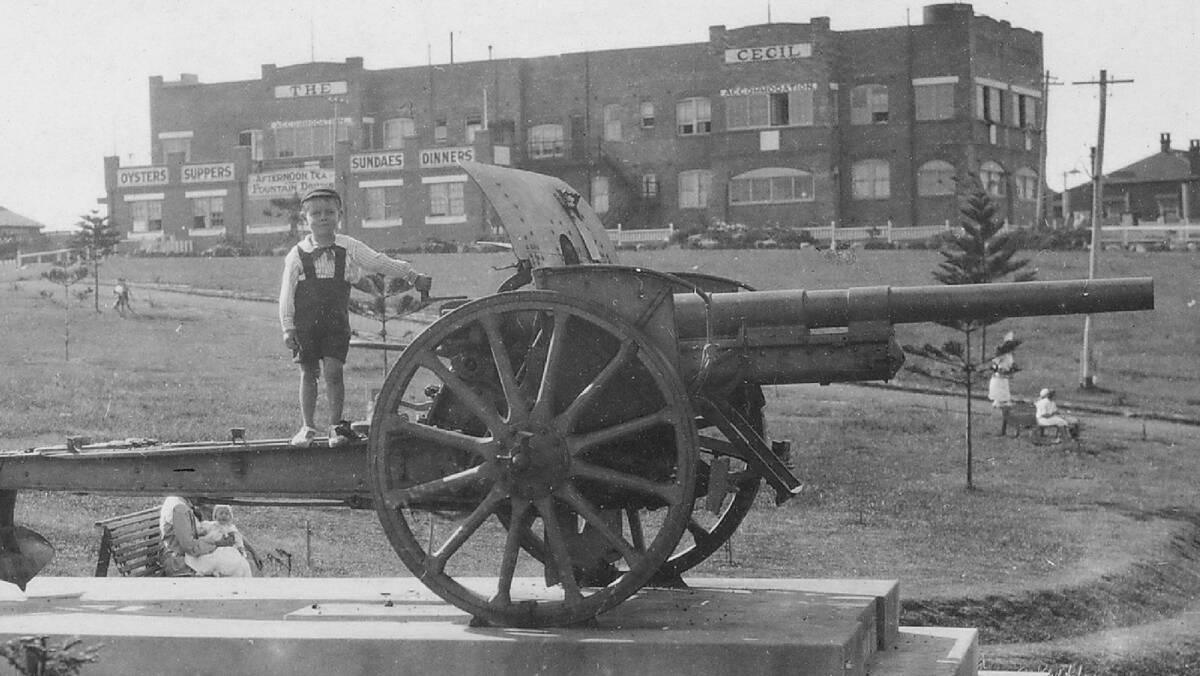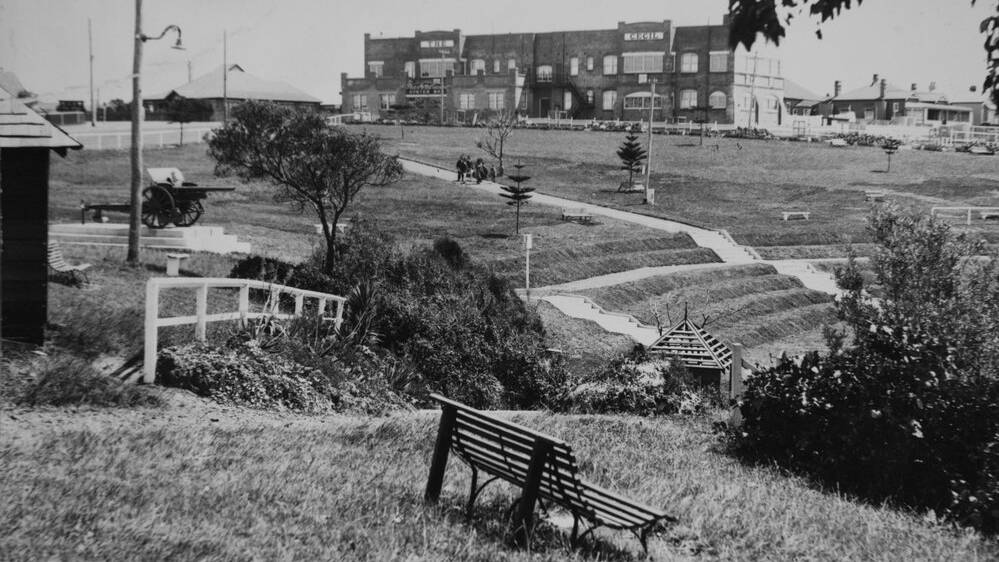
- Photos and story: Local History Collection, Sutherland Shire Libraries. For more historical images and information, visit: localhistory.sutherlandshire.nsw.gov.au
A large field gun, captured from enemy on the Western Front battlefields during the First World War, once stood in Cronulla Park.
During the First World War, Australian units captured, collected and sent home vast hauls of war trophies, battlefield relics and mementoes.
While countless artefacts made their way into museums and private collections, many larger items were put on display in public parks, gardens and even schools.

In May 1917 the Australian War Records Section (AWRS) was established to collect, preserve and classify all official documents relating to the Australian Imperial Force (AIF).
By the end of the year, their responsibilities had expanded to include control of 'the administration of all war trophies captured by Australian units.'
In fact, the Australian Imperial Force (AIF) managed to accumulate such an extensive collection of battlefield objects that by October 1919 it was decided to appoint a War Trophy Committee to each Australian state.
Each committee's duty was to receive, allocate and distribute the hundreds of large trophies, such as artillery pieces, machine guns and trench mortars, to cities, towns and institutions to put on 'permanent' display.In NSW, battlefield relics were distributed on the basis of population: the bigger the town, the bigger the gun.
In 1921, with a population of just 1480, Cronulla ranked 115th by population and was therefore out of contention to receive a large war trophy.
What they got was a light trench mortar. Unimpressed, Sutherland Shire Council called in its own big gun: Sir Charles Rosenthal, a highly decorated Major General who had strong connections to the Sutherland Shire. Sir Charles wrote to Major John Treloar, director of what was to become the Australian War Memorial requesting a more substantial war trophy.
Although Treloar was quite clear in stating that Cronulla was not eligible for special treatment, less than two months later, on 10 June 1921, the St George Call reported that 'an additional field gun was now available' and that it had been 'accepted for Cronulla.'
A battlefield relic was also secured for Sutherland.
In early April 1923, Sir Charles Rosenthal unveiled the Cronulla field gun during a ceremony at the war trophy's new home in Cronulla Park, and there it remained for some years.
During the Second World War, however, many of these war trophies were 'called-up' by the army and removed from public spaces.
Although the precise fate of each individual war trophy is unknown, it has been stated that 'many of these highly significant and extremely rare objects ended up in the furnace at Port Kembla to be turned into steel helmets or roofing nails or any of the other millions of objects required by a nation at war.'
On 5 March 1942, the Propeller newspaper reported:"Last Monday night a detachment of soldiers visited Sutherland Council Chambers, and, after much manoeuvring, dragged away the German gun trophy that stood in the garden grounds facing Princes Highway.
"That relic of 1914-18, it is understood, has stood there for about 23 years.
"Judging by its marking it was made in the Skoda armament works. The gun is of a type similar to the eighteen-pounder field gun of the Australian army.
"The Shire Clerk (Mr D.R. Kirkby) has explained that the military asked the Council, who are the trustees for the war trophy. It was agreed that they could remove it. He added that another gun trophy at Cronulla is to be removed by the army. ...
"A military order has indicated that all field guns and howitzers of German manufacturer and origin, of calibres 77mm, 4.2 inch or 5.9 inch, and all anti-aircraft guns, no matter what calibre, must be delivered to the Deputy Assistant Director of Ordnance Stores, Liverpool Camp by March 14."

